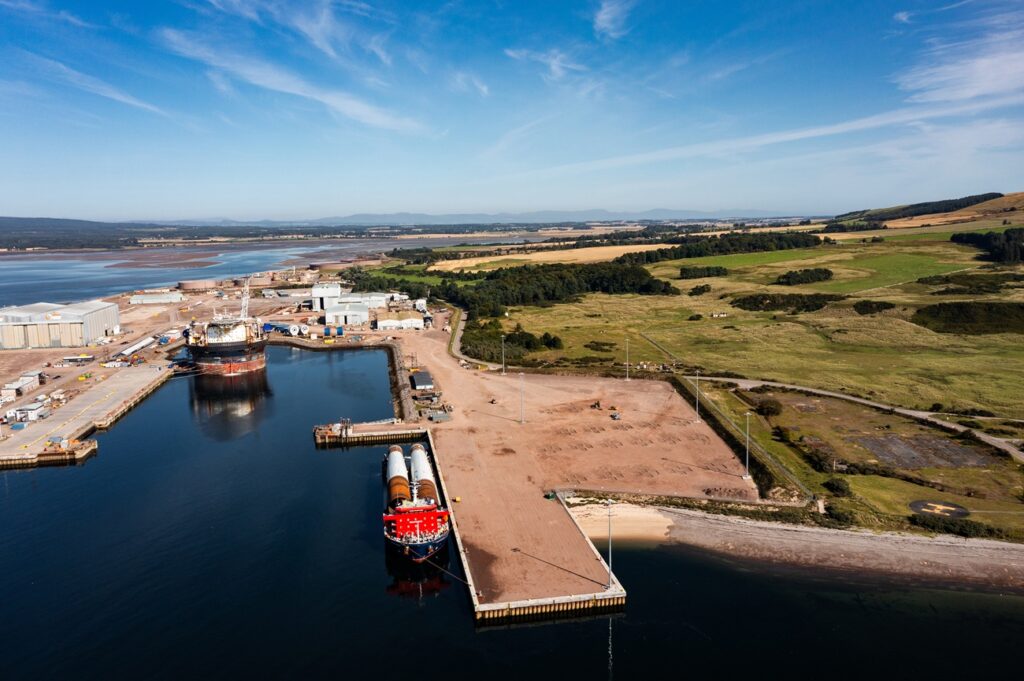The global energy transition is accelerating, and Scotland is positioning itself as a leader in renewable energy innovation. At the heart of this transformation lies the Port of Nigg, a strategic hub in the Highlands that is set to undergo a groundbreaking redevelopment. With a £10 million investment from Highlands and Islands Enterprise (HIE), the port is poised to become a cornerstone of Scotland’s offshore wind industry, driving economic growth, job creation, and sustainable development.
The redevelopment project at the Port of Nigg focuses on upgrading the Inner East Quay to create a heavy-duty quayside with roll-on roll-off capability. This enhancement will increase the port’s capacity and capabilities, making it an attractive destination for companies involved in offshore wind operations. The investment aligns with Scotland’s ambitious commitment to strategically invest up to £500 million over five years to anchor its offshore wind supply chain.

Deputy First Minister Kate Forbes highlighted the significance of this investment, stating, “Given its location and being part of Inverness and Cromarty Firth Green Freeport, The Port of Nigg is strategically important to the growth and success of the offshore wind sector.” Her remarks underscore Scotland’s determination to leverage its natural resources and infrastructure to lead the renewables revolution.
The Port of Nigg has already established itself as a key player in Scotland’s offshore wind industry. Developers recognize it as a prime location for manufacturing and assembling offshore wind components. Over the years, it has managed more than 3.5GW of assets through its facilities. This track record has attracted significant investments, including Sumitomo Electric Power Cables Ltd’s decision in 2024 to establish a £350 million high-voltage cable manufacturing facility at Nigg. Sumitomo’s facility is expected to generate 330 jobs over ten years while reinforcing Nigg’s role as a vital export hub.

Global Energy Group (GEG), which owns the port, has been instrumental in transforming Nigg into a world-class offshore wind superhub. Since acquiring the port in 2011, GEG has invested over £120 million in its development. Roy MacGregor, Chairman of GEG, emphasized that renewables now account for half of their revenue at both GEG and Nigg, demonstrating the sector’s critical role in driving sustainable economic prosperity.
The redevelopment project is expected to create around five direct jobs at the port while supporting over 100 downstream roles through supply chain activities. Beyond these immediate benefits, the broader economic impact is substantial. By enhancing Scotland’s offshore wind infrastructure, the project will attract further investments and enable long-term job creation across the Highlands.
The ripple effect extends beyond Nigg itself. Recent investments under Scotland’s £500 million commitment include funding for harbour facilities at Scapa Flow in Orkney and expansions at Port of Montrose. These initiatives collectively strengthen Scotland’s position as a global leader in renewable energy infrastructure.
Scotland’s offshore wind sector is experiencing rapid growth, driven by projects like ScotWind and INTOG (Innovation and Targeted Oil & Gas). The Port of Nigg is strategically positioned to support these developments by providing essential infrastructure for manufacturing, assembly, and export operations. With plans like HIE’s investment in the Inner East Quay, Nigg will play an even greater role in enabling Scotland to meet its ambitious renewable energy targets.
David Oxley, HIE’s director of strategic projects, remarked that this investment keeps Scotland at the forefront of renewable energy innovation while strengthening international competitiveness. His statement reflects Scotland’s commitment to becoming a global leader in green energy solutions.
The Port of Nigg redevelopment aligns seamlessly with Global Energy Group’s vision for sustainable growth. The company has partnered with Haizea Wind Group to build a state-of-the-art offshore wind tubular rolling facility at Nigg. This £110-120 million facility will produce up to 135 towers annually for fixed and floating offshore wind projects while creating over 400 direct jobs and 1,000 indirect roles across the Scottish supply chain.
Tim Cornelius, CEO of GEG, described this facility as an “enabler to firmly establish the Port of Nigg as a strategic offshore wind hub.” He emphasized its potential to help developers achieve local content targets while supporting green economic recovery









